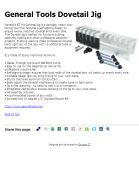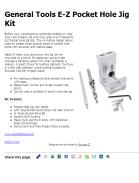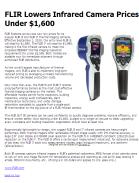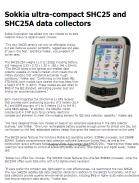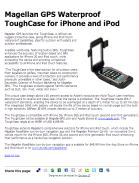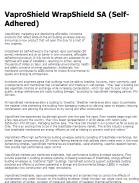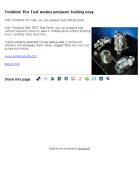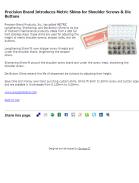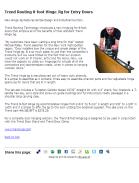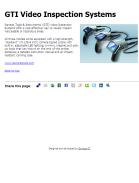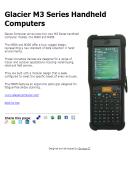VaproShield WrapShield SA (Self-Adhered)
 VaproShield, marketing and distributing affordable, innovative products that reflect state-of-the-art building envelope science, announces a new product that will open the door to a host of new projects.
VaproShield, marketing and distributing affordable, innovative products that reflect state-of-the-art building envelope science, announces a new product that will open the door to a host of new projects.
WrapShield SA Self-Adhered is the highest vapor permeable (50 perms) membrane and an air barrier in one innovative, affordable self-adhering product. It fully bonds to almost any substrate for air tightness and ease of installation, requiring no primer, saving thousands of dollars on labor, and eliminates environmental, health and safety concerns of primer application. Additionally, the membrane contributes to LEED points for Indoor Environmental Air Quality and Energy & Atmosphere.
Architects and engineers agree that buildings must be able to breathe; however, many commonly used underlayments and membranes trap condensation and moisture in wall cavities. "They 'seal' a building but also essentially minimize air exchange while increasing condensation, which can lead to poor indoor air quality, energy deficiencies and costly building damage," according to VaproShield managing partner, Phil Johnson.
All VaproShield membranes allow a building to "breathe." Breather membranes allow vapor to permeate the material while protecting the building from damaging moisture by allowing vapor to escape, reducing condensation and allowing the structure to dry during and after construction.
VaproShield has experienced double-digit growth over the past five years. From modest beginnings with a few reps around the country, they now boast representation in all 50 states with nation-wide distribution. Phil Johnson, managing partner says, "We have had interest in our product as far as away as Chile. This is an exciting time to be in the breathable membrane market. The entire industry is seeing that breathable membranes are energy efficient as well as helping to prevent mold and mildew."
VaproShield offers high performance building envelope systems consisting of breathable membranes, rain screen design components and 3D window flashing elements that address client needs even in the most demanding climates. VaproShield membranes are breathable, water-shedding, weather-resistant barriers that provide high performance vapor control.
VaproShield markets and distributes breathable, high performance building envelope solutions. They provide expertise in building envelope systems, increasing awareness of breathable, energy-efficient buidling envelopes vs. traditional "tight" buildings. VaproShield products support sustainable building practices and efforts to achieve Leadership in Energy and Environmental Design (LEED) in multiple categories; new construction and major renovations.
VaproShield breathable, vapor permeable membranes and air barriers help to control the effects of condensation and water intrusion on the building envelope. Water intrusion can cause wood rot, swelling and distortion of lumber, corrosion of metal and reduction of insulation thermal performance.
VaproShield breathable membranes are constructed from three-layer spun bonded polypropylene. The membranes are inert and can be recycled into their original bed form for reuse. VaproSillSaver and VaproBatten components are made from reprocessed residual vinyl trim material from old windows.
VaproShield promotes sustainable business practices that support a strong economic base, environmental responsibility and respect for the community. VaproShield measures their success by designing and providing products that create and promote high-performance building envelopes, ensuring a healthy environment for all occupants while reducing overall building and operating costs.
Why should I go to VaproShield?
VaproShield membranes can be used with almost any type of exterior cladding or roofing material. You can use VaproShield membranes on new, retrofit, rain screen, open joint, air barrier, pressure-equalized and drain back vented building designs. They offer innovative product solutions, expertise in building envelope systems and solid third-party testing performance data to back their products.
A Crash Course on Building Moisture Control
What is a weather resistive barrier (WRB)?
Weather resistive barriers are part of exterior wall systems designed to protect building materials from moisture penetration. Moisture can penetrate through a variety of places including cladding joints, and weather resistive barriers act as a secondary weather protection assembly. High performing permeable weather resistive barriers allow moisture vapor to escape and can resist air movement while ensuring building materials to remain dry and weather tight, increasing building performance, decreasing maintenance costs and reducing the risk of moisture-related problems such as mold, mildew, rot and sick building syndrome.
Is mold, mildew and rot a problem in buildings?
The North American building industry spends around $9 billion each year repairing and litigating damages from water and moisture. Risk management companies note that new materials used in building construction over the last 20 years were energy-efficient, but ventilation poor, resulting in toxic mold claims of over $3 billion. Air leakage can result in increased energy use of up to 30-40% in heating climates and 10-15% in cooling climates.
What is a perm?
A unit of water vapor transmission defined as 1 grain of water vapor per square foot per hour per inch of mercury pressure difference (1 inch mercury = 0.49 psi). Metric unit of measure is ng/m2 s Pa. 1 perm = 55 ng/m2 s Pa.
What is permeability?
The time rate of water vapor transmission through unit area of a material of unit thickness induced by unit vapor pressure difference between two specific surfaces, under specified temperature and humidity conditions.
Why should I care about perms and permeability?
Proper building envelope design promotes continual drying by allowing vapor to escape. Moisture can penetrate a building envelope through materials and rain/snow exposure during construction. General occupancy also adds to the moisture levels. Trapped moisture can cause wood rot, swelling and distortion of lumber, corrosion of metal and reduction of insulation thermal value. Any or all of these issues result in a high risk of mold, mildew, building deterioration, poor indoor air quality and health and safety risks to occupant's increases. In some states, new air tightness and energy saving requirements increase the possibility of trapped moisture, when low or non-permeable air barriers are utilized.
Membranes with a higher perm value greater than 20 reduce the risk of condensation and promote escape of moisture through the building envelope. Additionally, membranes with a high perm value can help building materials "dry-out" during the construction phase.
Simply put, when you wear a traditional rain slicker (1 perm) outside, you perspire because the moisture your body is making cannot escape.
On the flip side, if you went outside with a high perm slicker lined with something like Goretex®, the moisture in your body can escape because the Goretex lining allows your body to "breathe."
Buildings need to breathe just like our bodies.
Learn more at www.VaproShield.com

